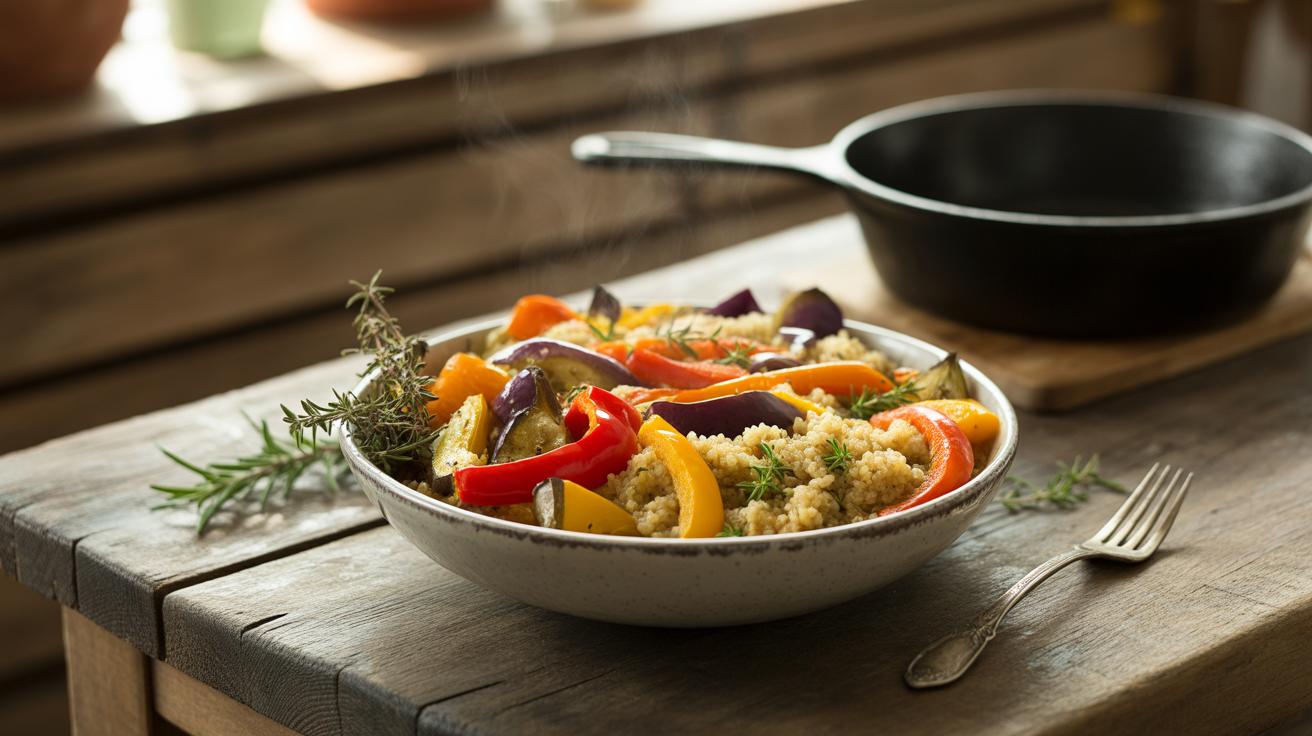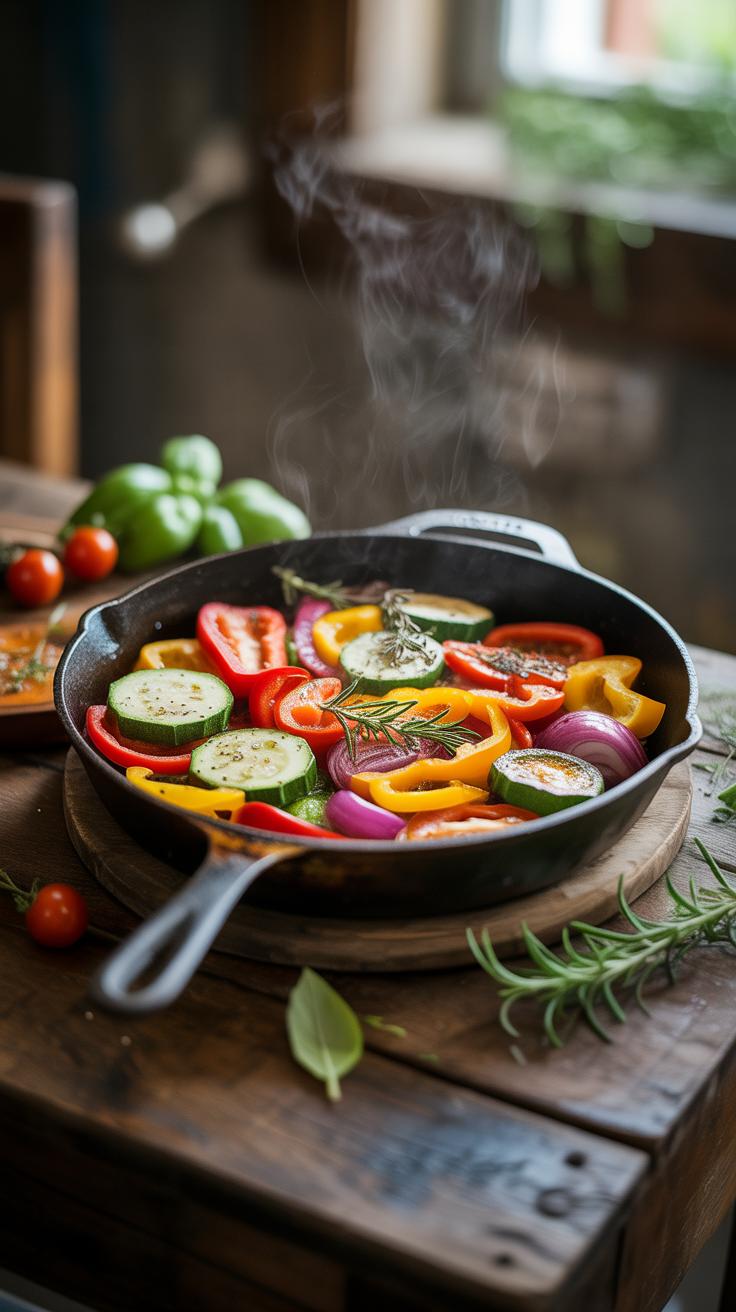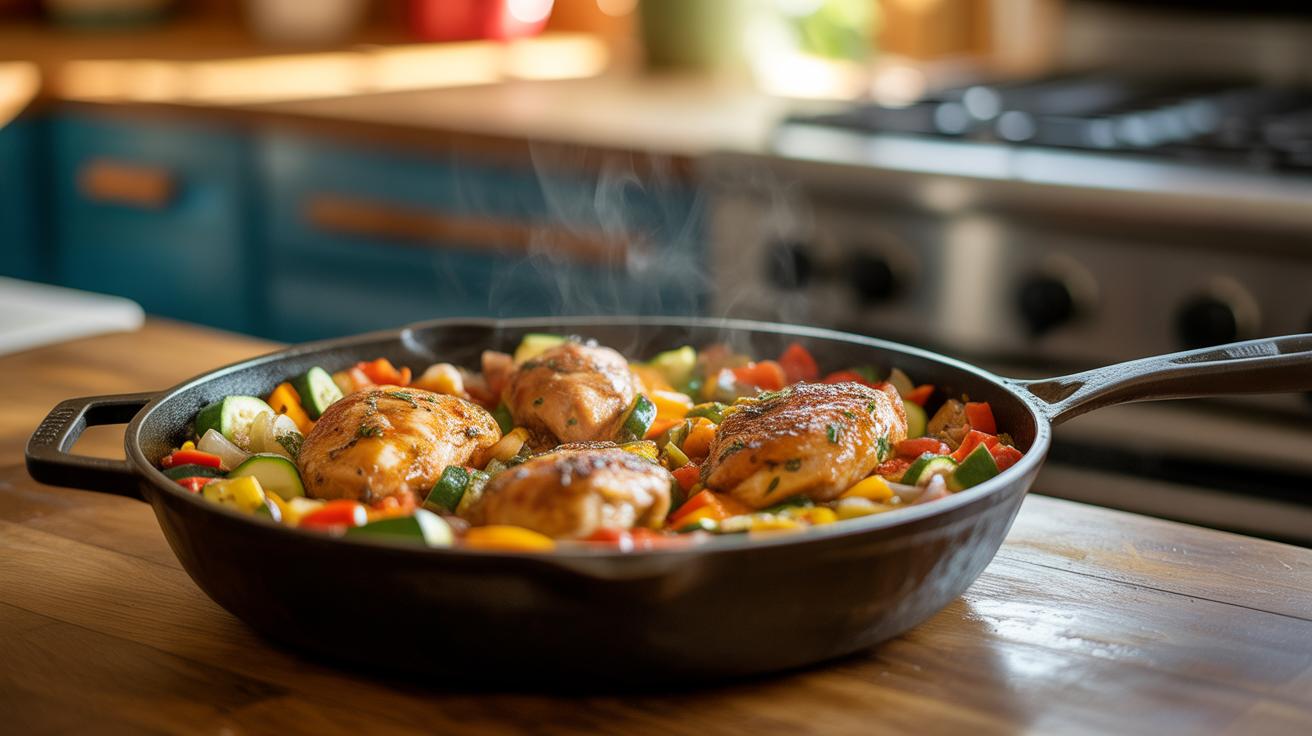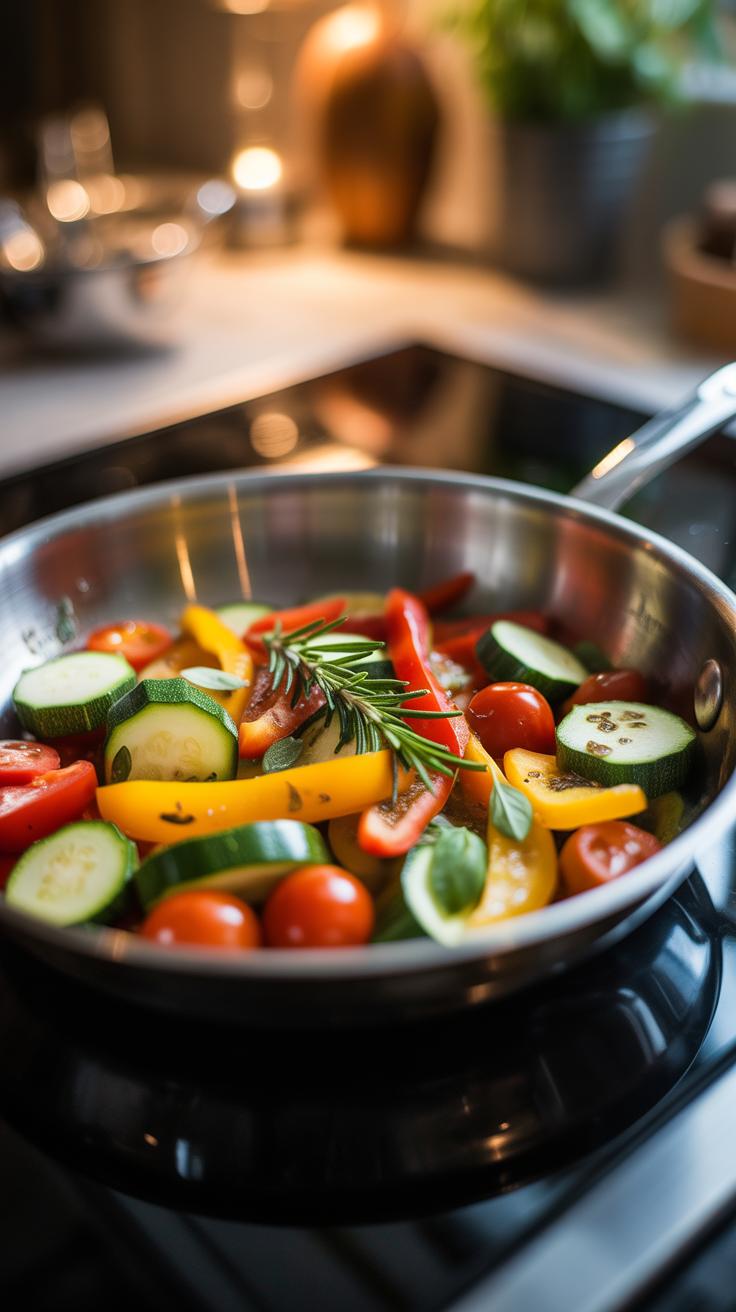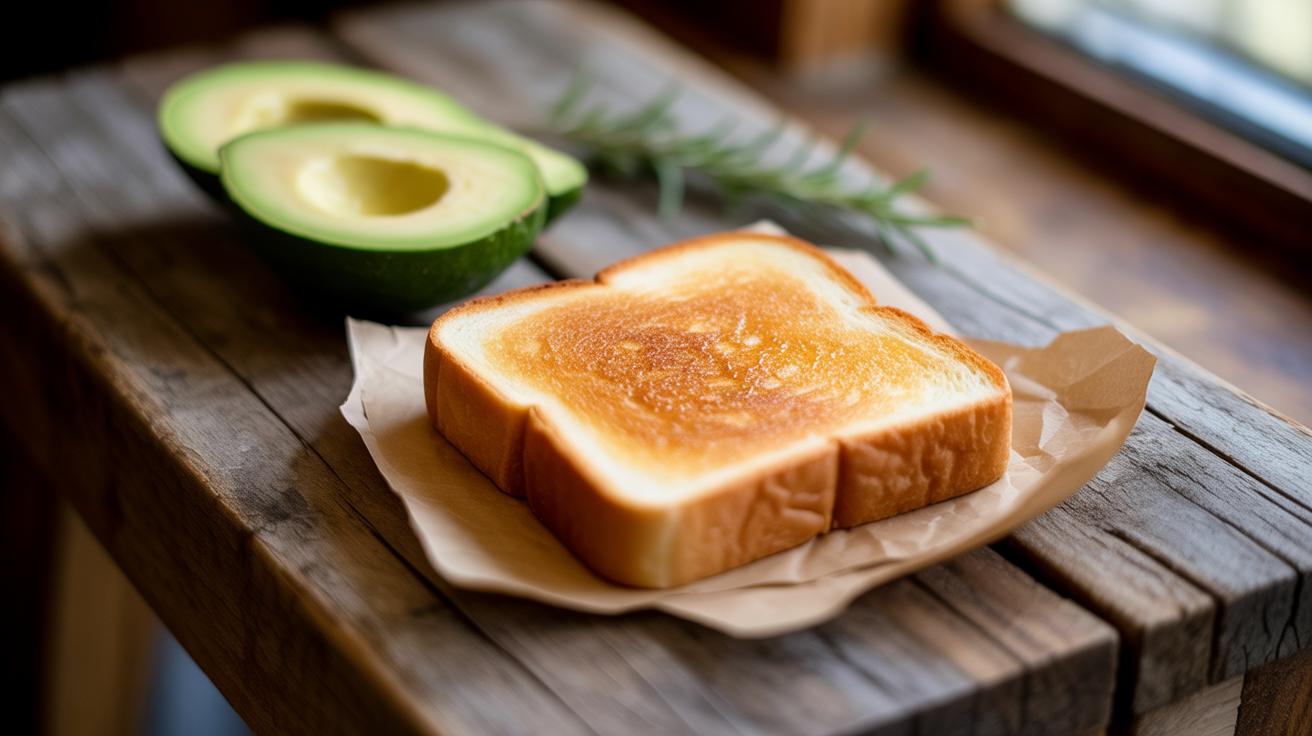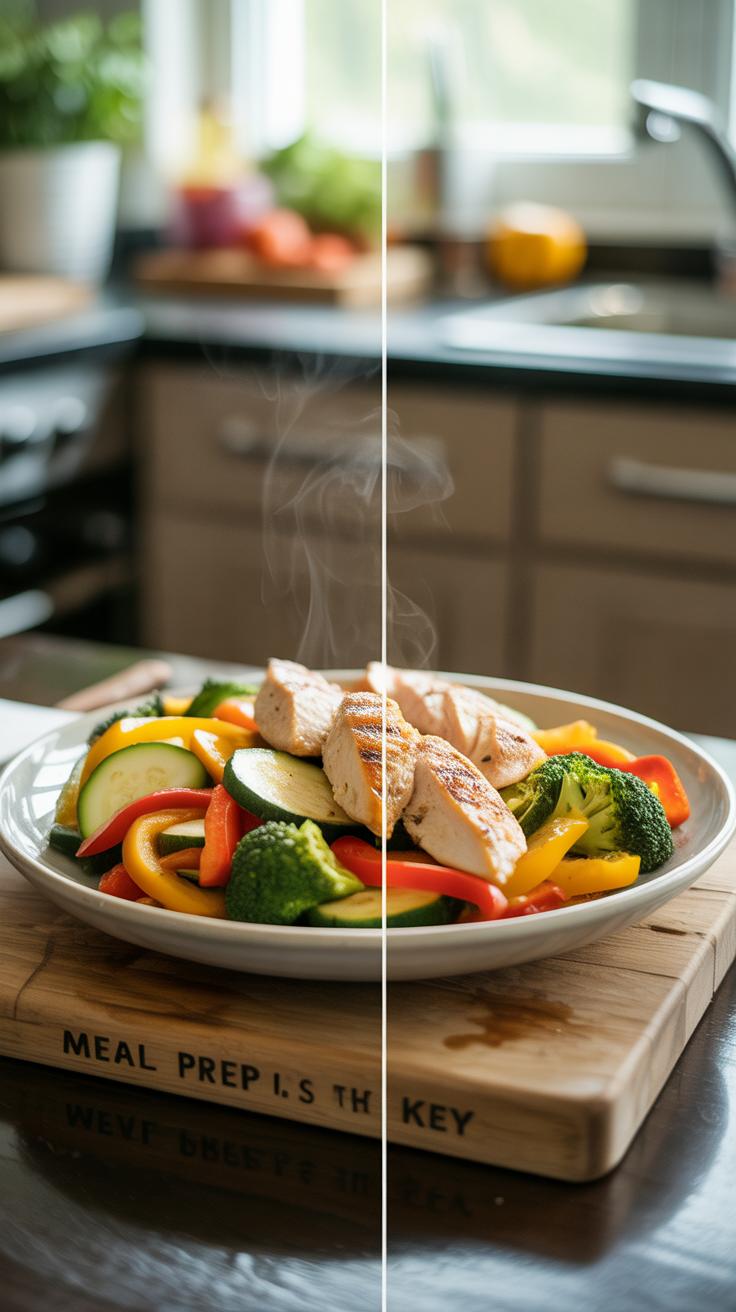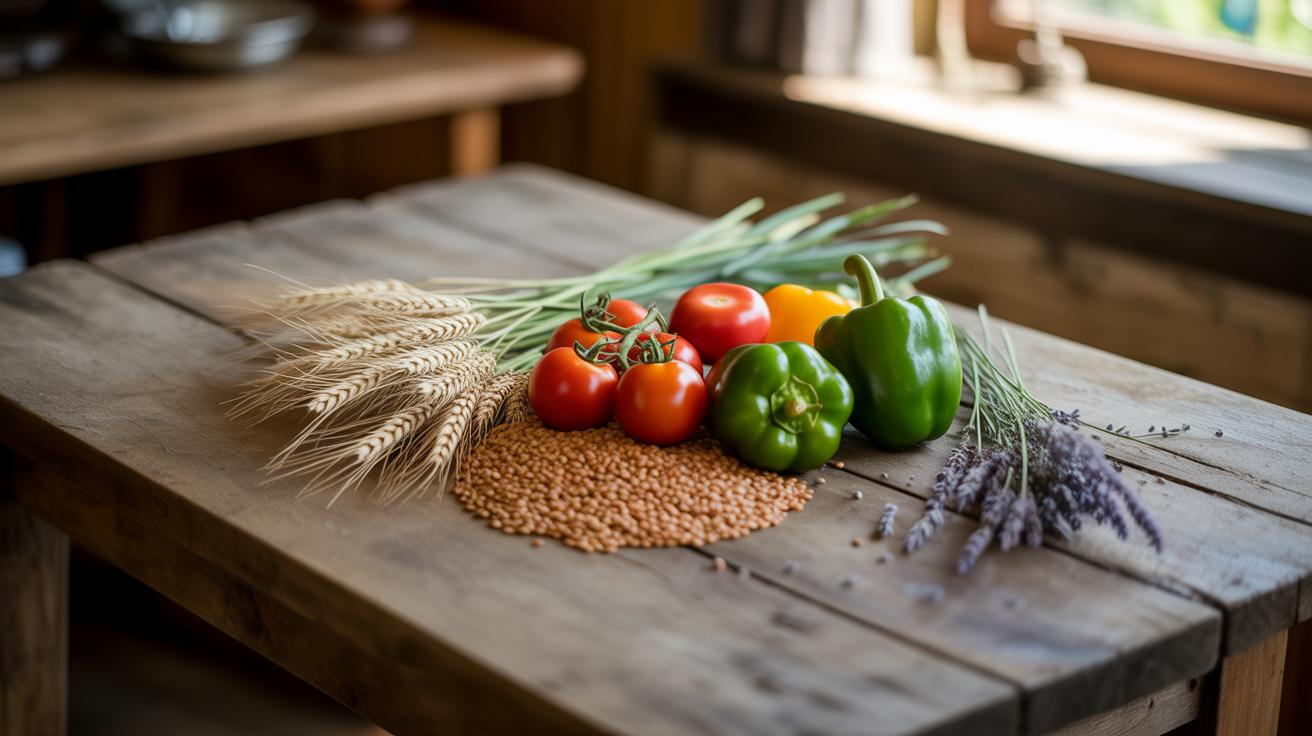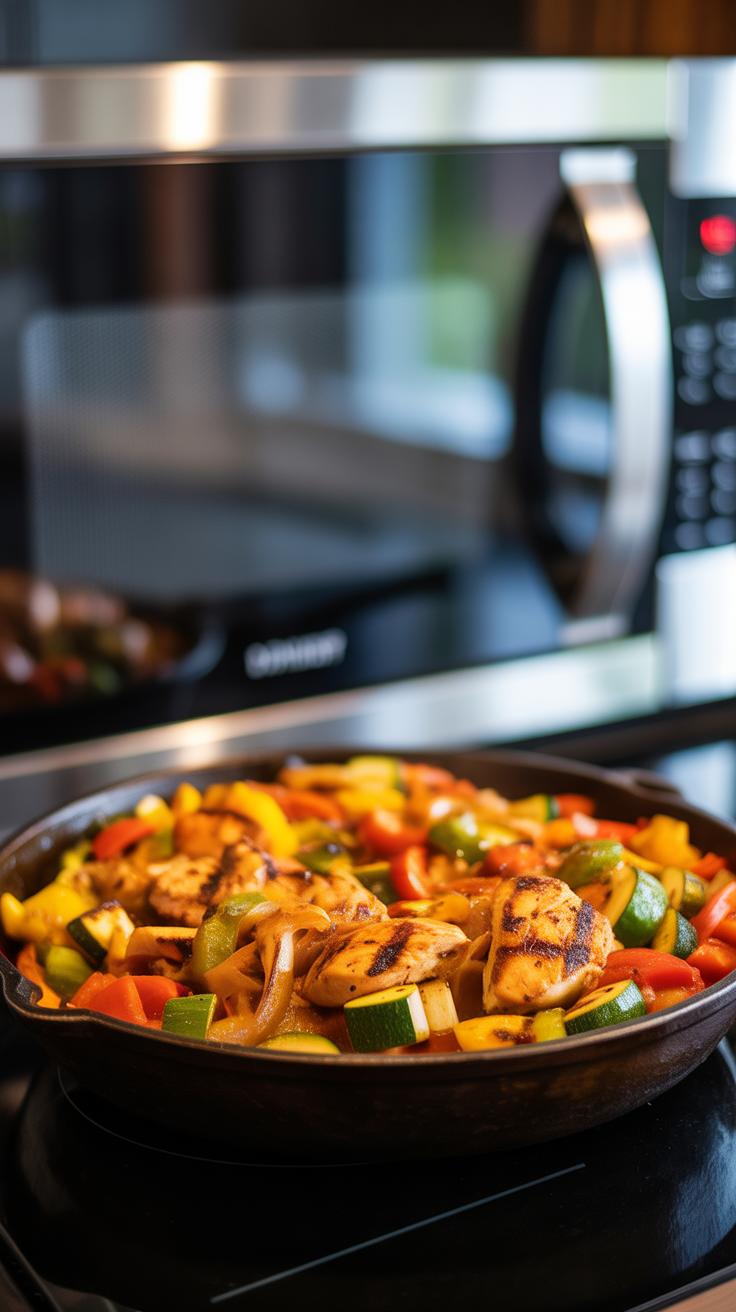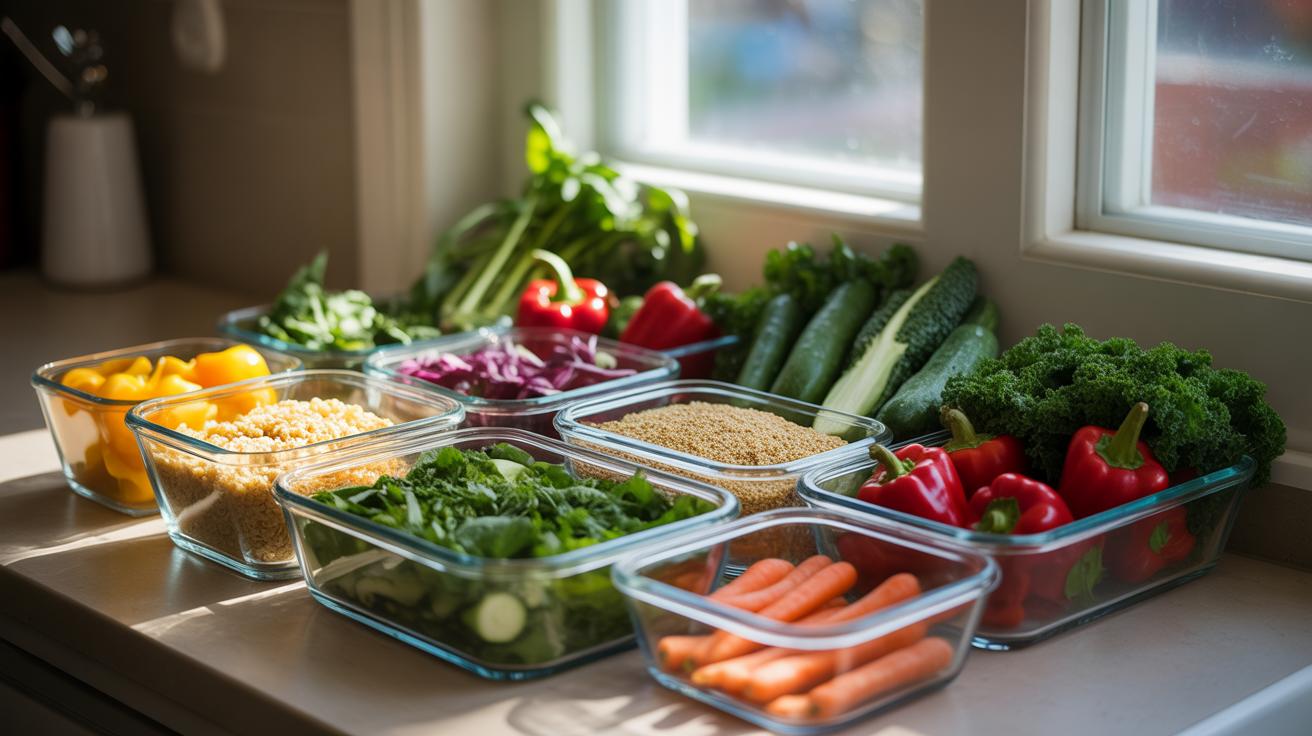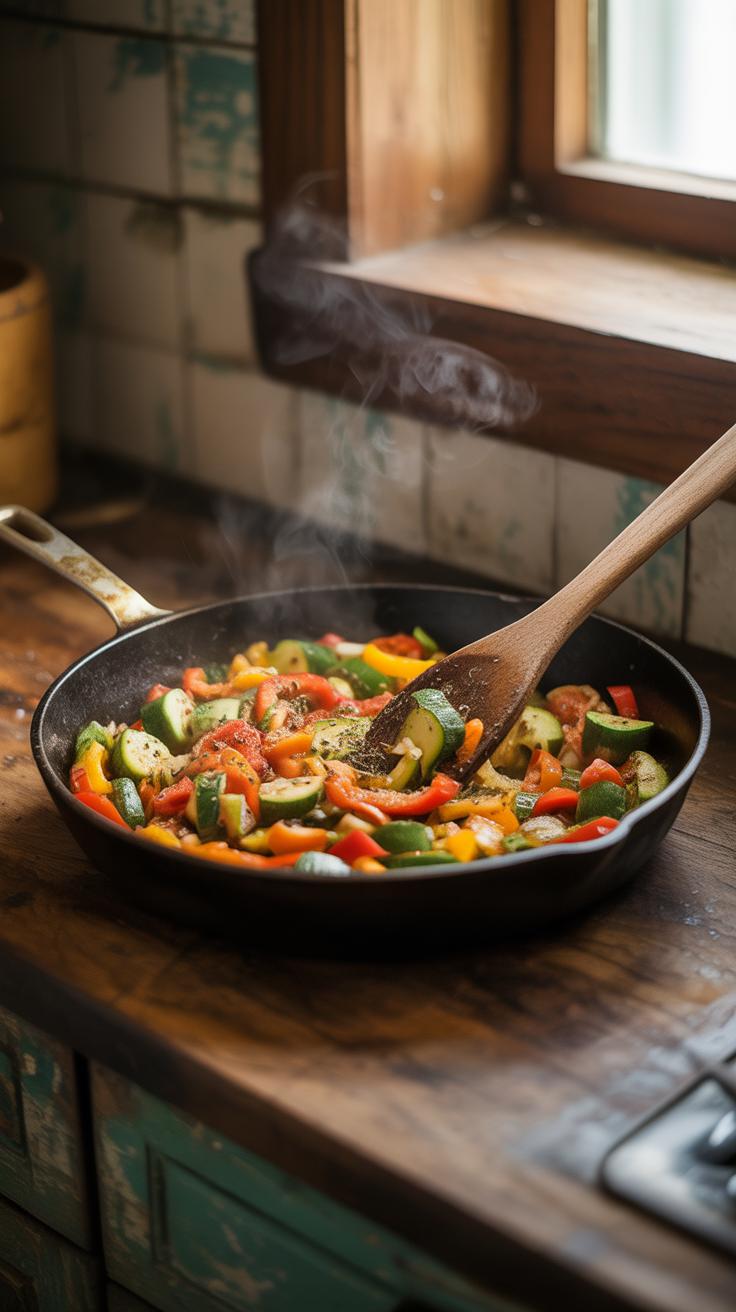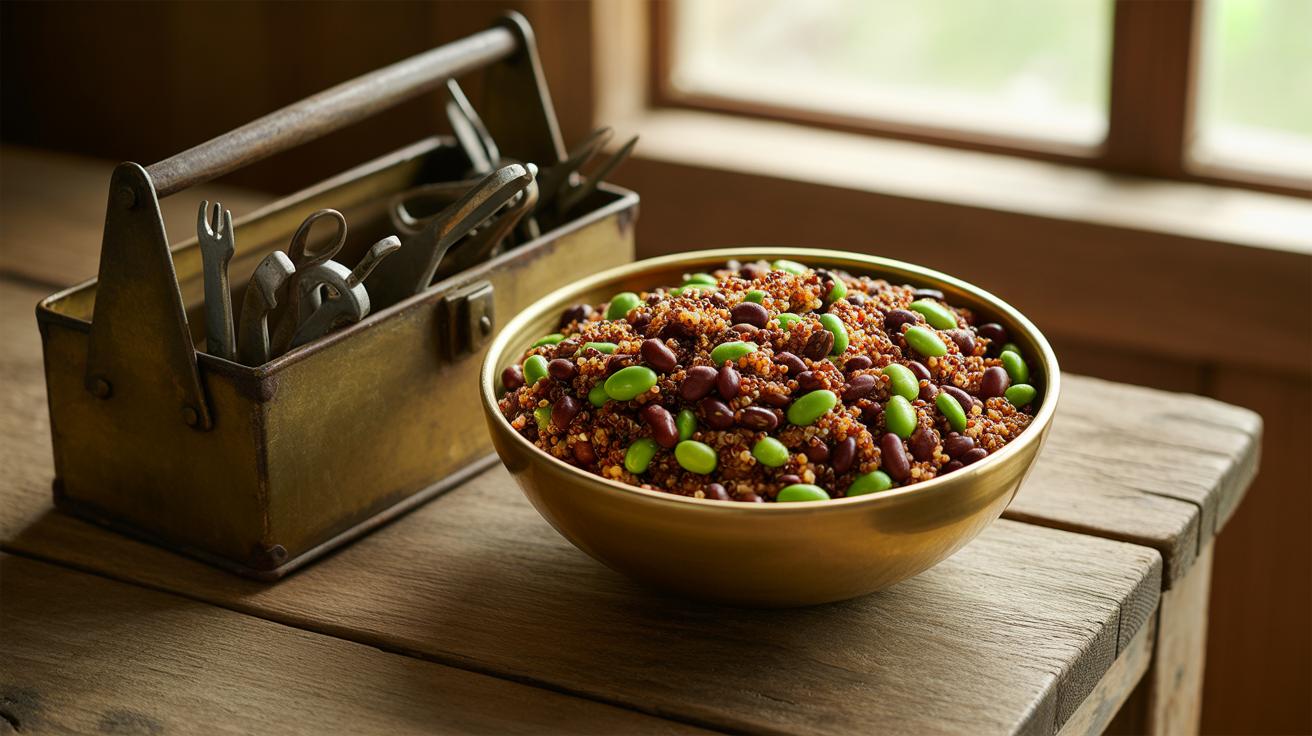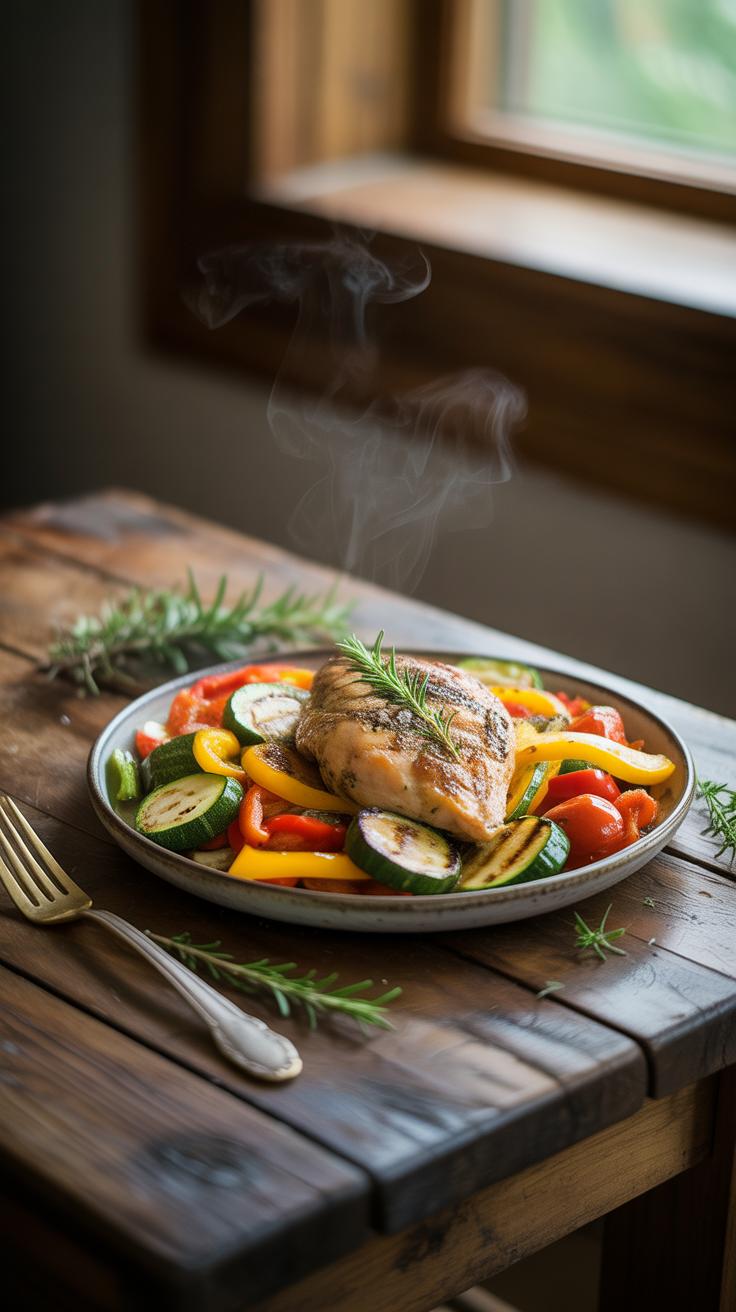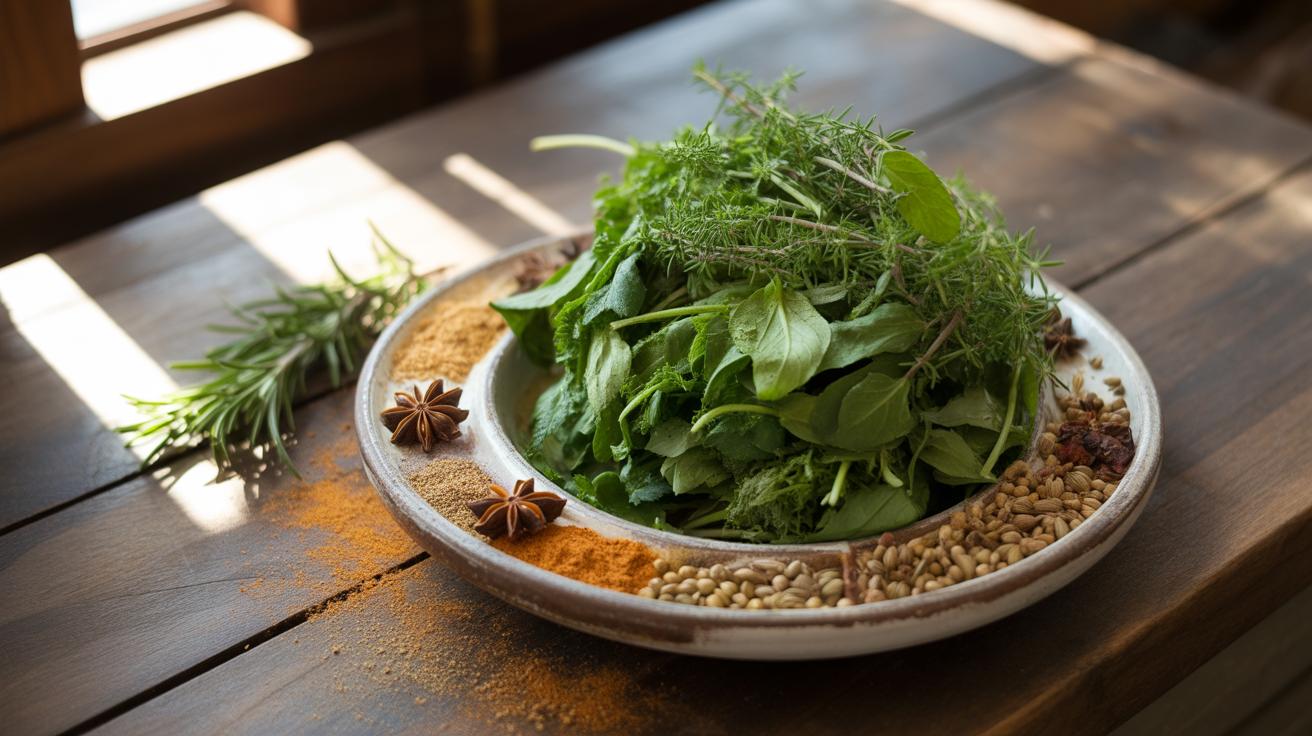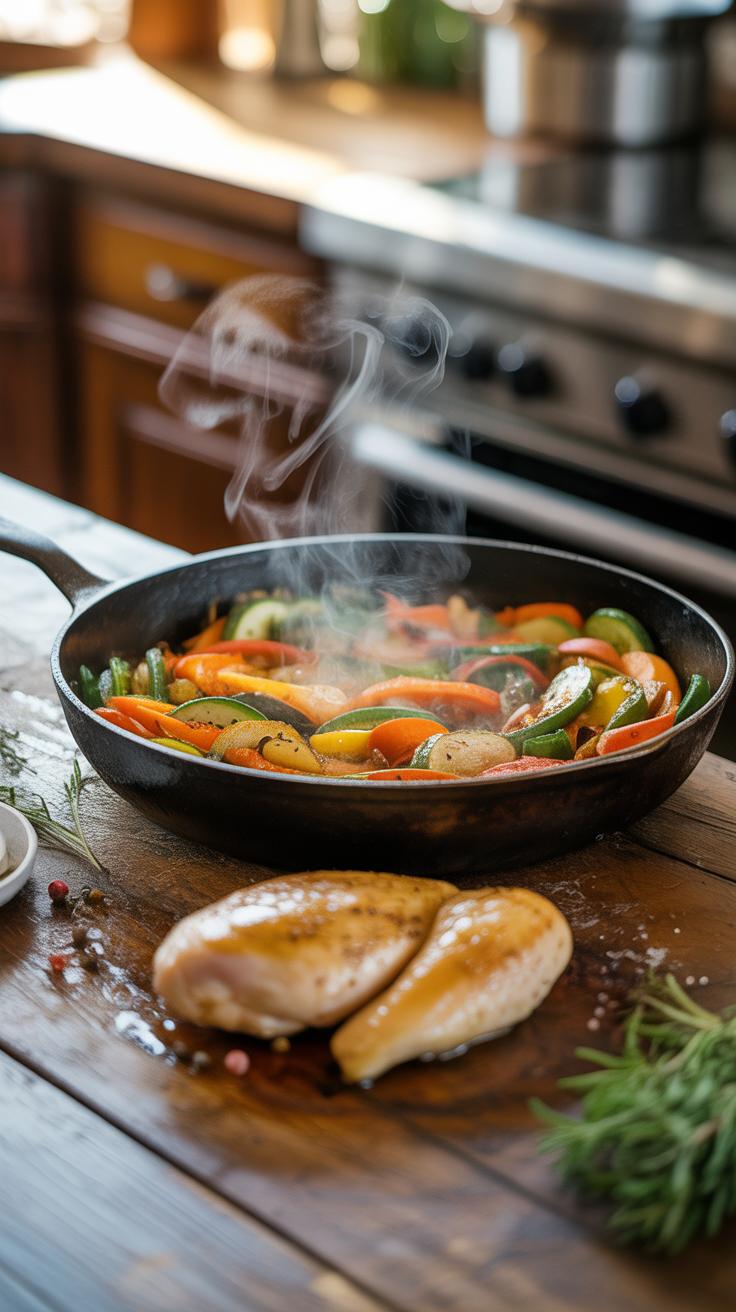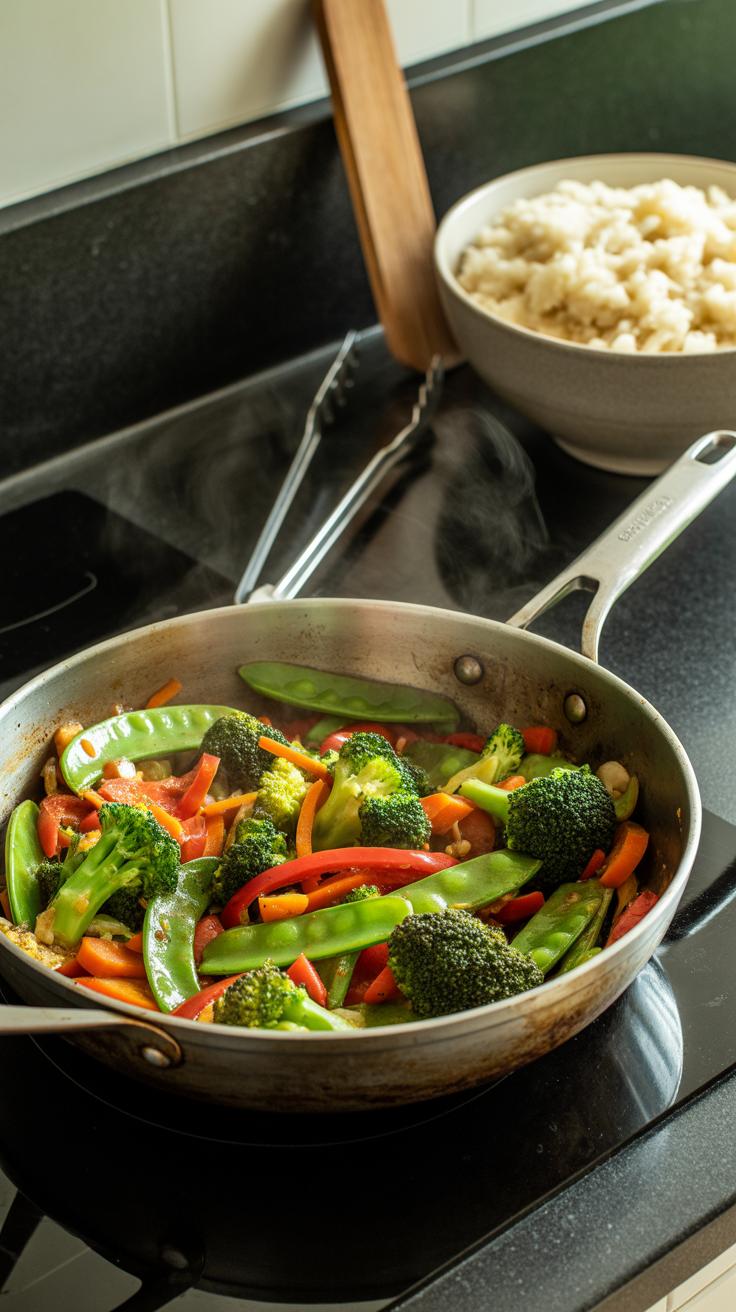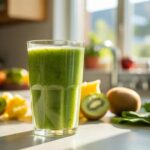Introduction
Weeknights can be busy and stressful, but that doesn’t mean you have to sacrifice health when it comes to dinner. Quick healthy dinner recipes can help you prepare nutritious meals fast. These recipes use simple ingredients and straightforward methods to deliver tasty meals that fuel your body without spending hours in the kitchen.
You will learn easy strategies for planning and cooking quick dinners. This includes tips for choosing ingredients, prepping ahead, and cooking smart. Then, explore practical examples of delicious meals you can make in 30 minutes or less. This article will help you get dinner on the table quickly while keeping health in mind.
Understanding Quick Healthy Dinner Basics
Quick healthy dinners are meals designed to be both nourishing and fast to prepare, especially helpful when weekdays get hectic. They focus on balancing nutrients without demanding long cooking times or complex techniques. You might think a healthy meal must take forever—well, that’s not always true.
The core idea is simple: combine proteins, vegetables, and whole grains in ways that don’t keep you stuck in the kitchen for an hour. When you manage that balance, you get a meal that energies you instead of dragging you down. It’s about practical nutrition, not fancy recipes.
Quick meals matter because, on most weeknights, energy and time feel limited. Cooking something real and wholesome in under 30 minutes can change how you feel about dinner. You avoid the temptation of ordering takeout or settling for less healthy options. Plus, when the fuss is minimal, you might actually enjoy mealtime more, which sounds pretty good, right?
So, think of quick healthy dinners as meals that respect your schedule without sacrificing your body’s needs. They focus on what’s on your plate, how fast it gets there, and how easy it is to put together—all in one.
What Makes Dinner Healthy and Fast
To get a dinner that ticks both “healthy” and “quick” boxes, focus on a few key points.
- Use whole foods—things close to their natural state. Fresh veggies, grains like quinoa or brown rice, fruits, nuts.
- Pick lean proteins like chicken, fish, beans, or tofu. These cook relatively fast and promote fullness.
- Skip anything heavily processed or loaded with added sugars or fats. They might be quick but won’t nourish you well.
- Keep preparation simple—think chopping, steaming, or roasting instead of multi-step cooking.
- Limit the number of ingredients to save time and effort.
- Use cooking methods that speed things up, like stir-frying or pressure cooking.
A quick dinner usually means around 30 minutes or less. Of course, prep affects that a lot. Washing, cutting, seasoning—these steps add up but can be trimmed by meal prepping or choosing pre-washed greens. It’s not just about cooking fast but getting everything ready efficiently too.
Why Quick Dinners Matter for Busy Lives
Imagine getting home after a long day—work, errands, maybe even squeezing in a workout. The last thing you want is a complicated dinner plan that adds stress or steals your evening. Weeknights often come with strict time limits, and without a plan, you might skip dinner or grab something less healthy.
Quick healthy dinners tackle this directly. They fit into tight schedules and reduce decision fatigue—no standing over the stove wondering what to cook for hours. Instead, you get a decent meal on the table fast, which cuts down stress.
It’s also about small wins. When dinner feels manageable, you’re less likely to abandon healthy habits. Plus, quick dinners leave more time for family, hobbies, or just unwinding. At the end of the day, that balance between nourishing your body and respecting your time feels worth it, don’t you think?
Choosing Ingredients for Speed and Nutrition
Picking ingredients that balance nutrition and quick cooking can feel tricky at times, but it’s doable once you know what to look for. Freshness often means shorter cooking times, especially with vegetables. Crisp greens like spinach or arugula barely need any cooking—sometimes just tossing them in at the last minute works. Carrots and bell peppers, sliced thinly, cook fast too or can be eaten raw to save those precious minutes.
Storing vegetables properly also matters. For example, storing pre-washed greens in a paper towel-lined container can keep them fresh longer and ready to grab for dinner. Roots like potatoes and sweet potatoes need more time, so keeping them peeled or cutting them into small cubes ahead of time speeds things up dramatically.
Best Vegetables for Quick Dinners
Think about vegetables like zucchini, snap peas, mushrooms, and cherry tomatoes. They either cook rapidly or can be added fresh without fuss. It’s useful to wash and prep them right when you get home from the store. That way, once you’re ready to cook, half the job is already done. Having a few pre-chopped frozen veggies around is a bit like a secret weapon—no chopping required, and the nutritional value remains pretty decent.
Protein Choices that Cook Fast
When it comes to proteins, lean cuts like chicken breasts or pork tenderloin cook faster than fattier pieces. Thinly sliced meats work best—you can stir-fry them in under 10 minutes. Fish fillets, like salmon or tilapia, take only a short time on the pan or in the oven, making them ideal for quick dinners. Eggs are versatile and super fast; scrambled, boiled, or poached, they add protein with minimal effort.
Plant proteins deserve a nod too. Lentils, chickpeas, and tofu can be thrown into dishes quickly—especially if you have canned versions on hand. For tofu, pressing it beforehand and then cutting it into small cubes helps it crisp up nicely in a hot pan.
Prepping proteins in advance, like marinating chicken or portioning tofu, really cuts down on dinner prep time. You might find yourself wondering if prepping too much ahead takes the fun out of cooking—but for weeknights, it keeps stress levels lower and mealtime smoother.
Effective Meal Prep to Save Time Weeknights
Meal prepping isn’t just a buzzword; it genuinely can change how your evenings unfold. By handling some tasks earlier in the day or week, you avoid the frantic scramble when dinner time hits. For example, chopping vegetables ahead saves precious minutes—you can toss them straight into a stir-fry or salad without the usual delay. Marinating proteins early not only boosts flavor but lets you skip that waiting step when you’re already hungry and tired.
Batch cooking grains like rice, quinoa, or couscous is worth considering too. They store well in the fridge and can be quickly reheated or even cold in a bowl. It’s surprising how much smoother the cooking flow becomes when you start with these prepped ingredients ready to go. Sometimes I find myself wondering why I didn’t do it sooner, yet other times, prepping feels like one more chore—there’s a balance to find.
Steps to Prep Ingredients in Advance
Here’s a simple checklist to get started without feeling overwhelmed:
- Wash and chop your vegetables (peppers, onions, carrots) and store them in airtight containers. Try layering paper towels to absorb moisture.
- Marinate proteins like chicken, tofu, or beef in a sealed bag. Make sure to refrigerate, and use them within two days.
- Cook grains in bulk and cool them before refrigerating in portioned containers.
- Pre-portion herbs or dressings in small jars to add freshness last minute.
- Label everything with prep dates to keep track and avoid surprises.
Food safety matters, so keep cold items chilled below 40°F and use them within recommended timeframes. It’s easy to forget, and then meals lose their taste or worse.
How Prep Improves Weeknight Cooking Flow
Having ingredients ready means you spend less time chopping, measuring, or waiting—and more time actually cooking or assembling. It reduces the stress that sometimes turns a meal into a chore. For example, when I come home late, grabbing a marinated chicken breast and some pre-cooked rice cuts dinner prep down by at least twenty minutes.
It also opens room for creativity—you can mix different veggies or sauces quickly without feeling locked into a recipe because you prepared core components. So, why does prepping sometimes feel like extra effort, yet other times like an essential lifesaver? Maybe it depends on your mindset, or whether you allow a little flexibility rather than rigid plans.
Simple Cooking Techniques for Fast Dinners
When you want a healthy dinner on the table quickly, the way you cook matters just as much as what you cook. Sautéing and stir-frying are great because they use high heat and constant movement, which cooks food fast, sealing in nutrients better than slow simmering. You get crisp vegetables and tender proteins without spending ages over the stove. For example, tossing shrimp and colorful bell peppers in a hot pan for just a few minutes delivers a vibrant, nutrient-packed meal.
Baking might seem slower, but it’s hands-off once underway. Roasting a tray of mixed veggies alongside chicken breasts lets you prep in just ten minutes and walk away. You still get the benefits of caramelized flavors and retained nutrients. One-pan dishes combine all this into a single step. Throw protein, veggies, and seasonings together in a sheet pan or deep skillet—the flavors mingle, cooking times sync up, and cleanup is minimized. Think sheet pan salmon with asparagus or chicken sausage with potatoes and green beans. Easy, quick, and healthy.
Want to save even more time? Use simple tricks like preheating your pans so they start cooking immediately. Cut ingredients into smaller pieces; they cook faster and evenly. Don’t be shy about cranking the heat up, but watch closely, so nothing burns. These small tweaks shave minutes off your prep and cooking, turning a complicated dinner into something you toss together more instinctively. You might find that fast doesn’t mean rushed or less nutritious after all.
Comparing Homemade Dinners vs Takeout
Nutrition and Cost Differences
When you cook dinner at home, you usually get better control over what goes onto your plate. You can choose fresh ingredients, avoid extra sugar or salt, and balance your portions. On the other hand, takeout meals often come loaded with hidden fats and added sodium, even if they look healthy at first glance. I’ve noticed that a simple homemade stir-fry, for example, ends up having fewer calories than a similar dish ordered from a restaurant.
Cost is another big factor. You might think ordering is quick and worth the price, but cooking at home often costs way less per serving. Groceries bought in bulk stretch out over multiple meals, saving money in the long run. Even if you pick premium brands or organic items, cooking still tends to be cheaper than regular takeout—especially if you avoid impulse buys or pricey extras.
Time Spent Cooking vs Ordering
Time is tricky. Takeout seems faster because you just place an order and wait. But that waiting time—sometimes 30, 40 minutes—can stretch out, especially on busy evenings. Meanwhile, making dinner at home takes preparation, cooking, and cleaning up. Yet, with practice and pre-planning, these dinners can be ready in 20 to 30 minutes. That’s sometimes comparable or even quicker than waiting for delivery.
Also, cooking at home isn’t just about standing over the stove the entire time. You can multitask—chop veggies while something simmers or tidy up as food cooks. Ordering means waiting passively, with no control over timing or delays. So, while takeout feels like it saves time, maybe it’s not always the case once you look more closely.
Checklist for Planning Weekly Healthy Dinners
Planning your dinners for the week can feel a bit overwhelming at first, but setting a routine makes it easier. Start by choosing recipes that balance nutrition and variety—mix plant-based meals with lean proteins and whole grains. Think about how much time you really have each night. Some meals might be quick fixes; others can be slower but prepared in advance.
When you map out your plan, include basics like vegetables, pantry staples, and proteins that keep well. Cereals, canned beans, and frozen veggies are handy to have around, and stocking a few fresh herbs can brighten many dishes.
For your grocery trip, make a list from your plan and stick to it—this saves time and helps stay within budget. Consider how fresh items will last through the week; sometimes buying just enough fresh leafy greens for a couple of days is better than overstocking. Prepping ingredients right after shopping—like washing and chopping veggies or marinating proteins—can chop down your weeknight cooking time. It might seem like extra work on the weekend, but it pays off.
Also, bulk cooking some grains or soups and portioning them out can provide quick meals when life gets busy. Don’t forget to check your fridge and pantry before shopping to avoid duplicates. Planning this way makes dinner less of a rush and more about nourishment and ease—do you find it easier to stick to your plan when you prep like this?
Examples of Quick Healthy Dinner Recipes
30-Minute Stir Fry with Veggies and Chicken
This stir fry is simple but covers all the bases—protein, fiber, and plenty of color on your plate. It comes together fast, which is great when you don’t want to spend much time cooking. Plus, you can swap the veggies or chicken for tofu if you feel like mixing it up later.
Ingredients:
- 2 boneless, skinless chicken breasts, thinly sliced
- 1 red bell pepper, sliced
- 1 cup broccoli florets
- 1 cup snap peas
- 2 cloves garlic, minced
- 1 tablespoon fresh ginger, grated
- 2 tablespoons soy sauce (low sodium)
- 1 tablespoon olive oil or sesame oil
- 1 teaspoon cornstarch dissolved in 2 tablespoons water (optional)
- Salt and pepper to taste
- Cooked brown rice or quinoa (to serve)
Instructions:
- Heat oil in a large skillet or wok over medium-high heat. Toss in chicken, seasoning lightly, and stir-fry for 5–6 minutes until nearly cooked through.
- Add garlic and ginger, stir for 1 minute until fragrant.
- Throw in the broccoli, snap peas, and bell pepper. Cook for about 5 minutes, stirring often, until veggies are crisp-tender.
- Pour in soy sauce and the cornstarch mixture if you want a thicker sauce. Stir quickly to combine and coat everything. Cook another 1–2 minutes.
- Serve hot over your grain of choice.
Sometimes this feels almost too easy for a weekday meal, but it never disappoints. If you’re a bit pressed for time, chopping veggies ahead can shave off minutes. I find the fresh ginger adds a zing that honestly lifts the whole dish—try not to skip it.
One-Pan Salmon and Asparagus Dinner
This meal is about keeping things straightforward. Since everything bakes together, you mostly just toss ingredients on a sheet pan, pop it in the oven, and wait. It feels almost like cheating on effort but not on nutrition.
Ingredients:
- 2 salmon fillets (about 6 ounces each)
- 1 bunch asparagus, trimmed
- 1 tablespoon olive oil
- 1 lemon, sliced
- 2 garlic cloves, minced
- Salt and pepper
- Fresh dill or parsley for garnish (optional)
Instructions:
- Preheat oven to 400°F (200°C).
- Place salmon fillets on a rimmed baking sheet. Arrange asparagus around the salmon.
- Drizzle olive oil over everything. Sprinkle garlic, salt, and pepper evenly.
- Top salmon with lemon slices.
- Bake for 12–15 minutes until salmon flakes easily with a fork and asparagus is tender.
- Garnish with herbs if you like before serving.
What I appreciate most here is the minimal cleanup—one pan, done. And honestly, I think the lemon really brightens the richness of the salmon in a way that feels fresh, almost spring-like. You can add some diced potatoes if you want more carbs, but I usually keep it light as is.
Avoiding Common Pitfalls in Quick Dinner Cooking
Timing and Overcooking Issues
Timing really can make or break a fast, healthy dinner. Overcooking vegetables turns them soggy and bland, while undercooking protein leaves you guessing whether it’s safe to eat. I’ve found that knowing roughly how long each ingredient takes is a good starting point, but there’s often some guesswork involved. The key is to keep an eye on your food without hovering constantly — check-in moments work better than nonstop stirring.
Multitasking helps, but it can get messy if you’re not careful. For example, starting grains or pasta first gives you time to prepare the quicker-cooking parts like stir-fried veggies or fish. Also, using timers or even your phone’s stopwatch stopped me from burning things more times than I’d like to admit. You might try prepping ingredients in advance, too. That way, when it’s go-time, you focus purely on cooking rather than chopping or measuring.
Balancing Flavors and Nutrition
Creating a meal that tastes good and feeds your body well can feel tricky when time is short. But it’s rarely about complicated seasonings or exotic ingredients. Simple salt, pepper, and a squeeze of lemon can enhance even the fastest dishes. When you rush, it’s easy to forget to taste along the way—not tasting? That’s a mistake I’ve made often. Your palate is the best guide.
Color often signals variety on the plate and hints at a balanced meal. Try mixing greens, reds, and yellows—the more, the better. Don’t just load up on carbs or protein alone. Pair your main ingredient with vegetables and maybe a small serving of whole grains or legumes. It’s a simple trick, really, but it helps maintain nutrition without adding extra steps. Still, sometimes you’ll end up prioritizing speed over balance. That’s okay. The goal here isn’t perfection, just better results than usual.
Conclusions
Quick healthy dinner recipes make it possible to eat well even on busy nights. You don’t need complex ingredients or long cooking times. Planning ahead, choosing fresh ingredients, and using simple cooking methods can help you create meals that support your health and save time.
Trying the recipes and tips shared here gives you a good start to developing your own quick meal routine. With practice, cooking healthy dinners fast will become easier and more satisfying. This way, you can enjoy nourishing meals and feel good about what you eat each week.

